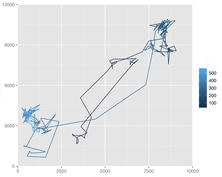Publication trimestrielle du Laboratoire
d'analyse et d'architecture des systèmes du CNRS
In this thesis, we propose a N-dimensional coupled discrete-time system whose parameters are forced into periodic varying, the N-dimensional system being constructed of n same one-dimensional subsystems with mutually influencing coupling and also coupled continuous-time system including periodically parameter varying which correspond to the periodic varying in the discrete-time system.Firstly, we introduce the N-dimensional coupled parametrically forced discrete-time system and its general properties. Then, when logistic maps is used as the one-dimensional subsystem constructing the system, bifurcations in the one or two-dimensional parametrically forced logistic map are investigated. Crossroad area centered at fold cusp points regarding several order cycles are confirmed.Next, we investigated behaviors of the coupled Chua's circuit whose parameter is forced into periodic varying associated with the period of an internal state value. From the investigation of bifurcations in the system, non-existence of odd order cycles and coexistence of different attractors are observed. From the investigation of synchronizations coexisting of many attractors whose synchronizations states are different are observed. Observed phenomena in the system is compared with the parametrically forced discrete-time system. Similar phenomena are confirmed between the parametrically forced discrete-time system and the parametrically forced Chua's circuit. It is worth noting that this facilitates to analyze parametrically forced continuous-time systems, because to analyze discrete-time systems is easier than continuous-time systems.Finally, we investigated behaviors of another coupled continuous-time system in which Chua's circuit is used, while, the motion of the switch controlling the parametric varying is different from the above system. Coexisting of many attractors whose synchronizations states are different are observed. Comparing with the above system, the number of coexisting stable state is increased by the effect of the different switching motion.





